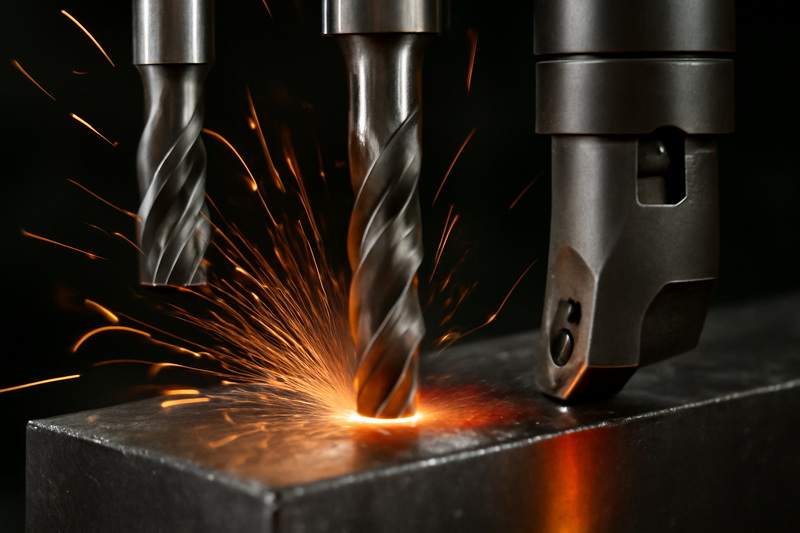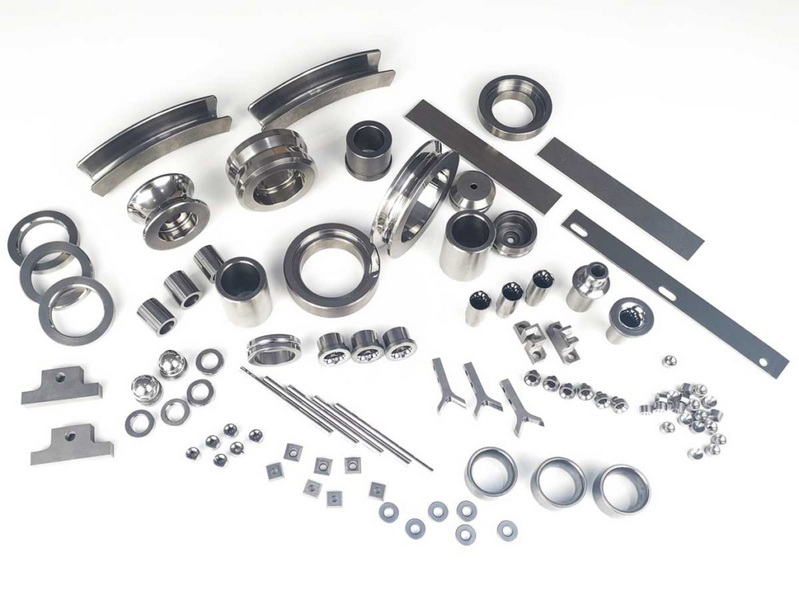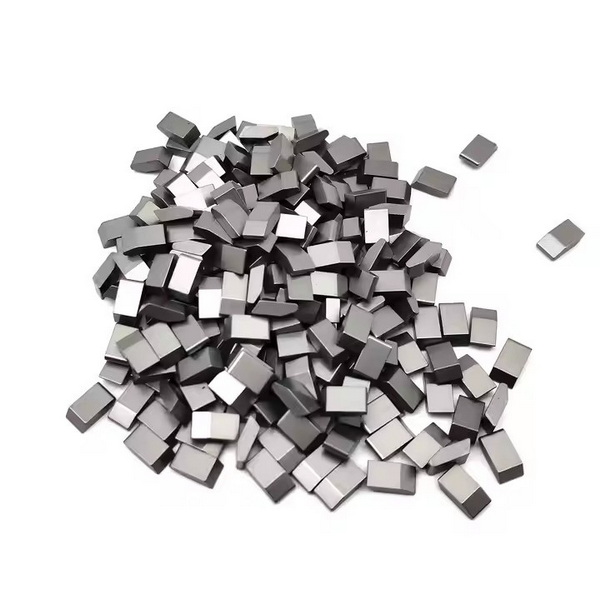Content Menu
● Introduction to Tungsten Carbide
>> Key Characteristics
● The Melting Point of Tungsten Carbide
● Why the High Melting Point Matters
● The Science Behind Tungsten Carbide's Structure
>> Atomic Arrangement
● Comparison with Other Materials
● Industrial Applications Leveraging High Melting Point
● Manufacturing and Processing Techniques
● Challenges in Working with Tungsten Carbide
● Environmental and Safety Considerations
● History of Tungsten Carbide
● Detailed Case Studies
>> Aerospace Industry
>> Mining Industry
● Technical Diagrams and Visualizations
● Expanded Recycling and Environmental Impact
● Additional Examples and Applications
>> Jewelry Industry
>> Medical Technology
● Future Trends and Innovations
● Conclusion
● FAQ (Frequently Asked Questions)
>> 1. What factors influence the melting point of tungsten carbide?
>> 2. How does tungsten carbide compare to pure tungsten in terms of melting point?
>> 3. Why is tungsten carbide preferred over steel for high-temperature applications?
>> 4. Can tungsten carbide be melted and cast like other metals?
>> 5. What are some common uses of tungsten carbide that leverage its high melting point?
Tungsten carbide stands as one of the most remarkable materials in the world of modern engineering and manufacturing. Known for its extraordinary hardness, durability, and resistance to heat, it is a staple in industries ranging from mining and aerospace to jewelry and medical technology. Central to its reputation is its exceptionally high melting point, a property that defines its performance in extreme environments. This comprehensive article explores the melting point of tungsten carbide, its scientific underpinnings, real-world applications, and the broader impact of this unique material.

Introduction to Tungsten Carbide
Tungsten carbide is a chemical compound composed of equal parts tungsten and carbon atoms, with the chemical formula WC. It is renowned for its extreme hardness, ranking just below diamond on the Mohs scale, and its impressive resistance to wear, corrosion, and high temperatures. These properties make tungsten carbide a preferred choice for a wide variety of demanding applications.
Key Characteristics
- Exceptional hardness (Mohs 9–9.5)
- High density (about 15.6 g/cm³)
- Thermal stability at elevated temperatures
- Resistance to corrosion and chemical attack
The Melting Point of Tungsten Carbide
The melting point of tungsten carbide is approximately 2,870°C (5,200°F). This is one of the highest melting points among all known industrial materials, surpassed only by a few substances such as pure tungsten. The actual melting point may vary slightly depending on the specific composition and presence of secondary phases, but it consistently exceeds 2,800°C.
Why the High Melting Point Matters
A high melting point is not just a scientific curiosity-it has profound practical implications:
- Thermal resilience: Components retain their strength and shape even when exposed to intense heat.
- Prolonged lifespan: Less wear and deformation at high temperatures extends the operational life of tools and machinery.
- Wider application range: Enables use in environments where other materials would melt or lose integrity.
The Science Behind Tungsten Carbide's Structure
Tungsten carbide's remarkable properties are rooted in its unique atomic structure and the nature of the chemical bonds between tungsten and carbon.
Atomic Arrangement
- Hexagonal crystal structure: Tungsten atoms form a hexagonal lattice, with carbon atoms occupying interstitial sites.
- Strong covalent bonds: The bond between tungsten and carbon is highly covalent, leading to exceptional stability and hardness.
Comparison with Other Materials
| Material | Melting Point (°C) | Mohs Hardness | Primary Use Cases |
| Tungsten Carbide (WC) | ~2,870 | 9–9.5 | Cutting tools, mining, wear parts |
| Pure Tungsten | 3,422 | 7.5 | Light bulb filaments, electrodes |
| Steel (High Carbon) | ~1,370 | 7–8 | Construction, machinery |
| Titanium Carbide | ~3,160 | 9–9.5 | Abrasives, cutting tools |
| Aluminum | 660 | 2.75 | Packaging, construction |
Industrial Applications Leveraging High Melting Point
Tungsten carbide's ability to withstand extreme heat and mechanical stress makes it indispensable in several industries:
- Cutting and drilling tools: Used in machining, mining, and oil exploration, where tools must retain sharpness at high temperatures.
- Aerospace components: Parts exposed to high friction and heat, such as turbine blades and rocket nozzles.
- Wear-resistant coatings: Applied to surfaces that must resist abrasion and corrosion.
- Jewelry: Tungsten carbide rings and accessories are valued for their durability and scratch resistance.

Manufacturing and Processing Techniques
Due to its high melting point, tungsten carbide cannot be shaped or cast like conventional metals. Instead, it is typically manufactured using powder metallurgy techniques:
1. Powder synthesis: Tungsten and carbon powders are mixed and reacted at high temperatures.
2. Compacting: The powder is pressed into a desired shape.
3. Sintering: The compacted shape is heated to a temperature below its melting point, causing the particles to bond together.
Challenges in Working with Tungsten Carbide
- Machining difficulty: Its hardness makes it challenging to machine using conventional methods, often requiring diamond tools.
- Brittleness: While extremely hard, tungsten carbide can be brittle under certain conditions, making it susceptible to cracking.
- Cost: The raw materials and processing methods are more expensive compared to standard steels.
Environmental and Safety Considerations
- Recycling: Tungsten carbide can be recycled, reducing environmental impact and conserving resources.
- Toxicity: Inhalation of tungsten carbide dust should be avoided, necessitating proper safety measures during manufacturing.
History of Tungsten Carbide
Tungsten carbide was first developed in the early 20th century as a revolutionary material for industrial applications. Its discovery marked a significant advancement in materials science, providing a material that combined the hardness of diamond with the toughness of steel. Early uses included cutting tools and abrasives, which transformed manufacturing and mining industries. The ability to machine harder materials more efficiently led to rapid industrial growth and innovation.
Detailed Case Studies
Aerospace Industry
One notable case study involves the use of tungsten carbide in the aerospace industry. Turbine blades coated with tungsten carbide composites have demonstrated remarkable resistance to heat and wear, significantly extending the lifespan of jet engines. This has resulted in lower maintenance costs, improved safety, and enhanced performance for aircraft operating in extreme conditions.
Mining Industry
In mining, tungsten carbide drill bits have enabled deeper and more efficient extraction of minerals. Their ability to maintain sharpness and resist deformation under high-pressure, high-temperature conditions has reduced downtime and operational costs, making mining operations more productive and sustainable.
Technical Diagrams and Visualizations
While textual descriptions provide insight, visualizing the microstructure of tungsten carbide helps understand its properties. The hexagonal lattice structure, combined with the strong covalent bonds, creates a dense and stable material. Advanced microscopy images reveal grain boundaries and nano-sized particles that contribute to its toughness.
Expanded Recycling and Environmental Impact
Recycling tungsten carbide not only conserves valuable resources but also reduces environmental pollution. The recycling process involves collecting scrap material, crushing it into powder, and then re-sintering it to produce new components. This closed-loop system minimizes waste and energy consumption. Additionally, ongoing research focuses on developing greener manufacturing methods that reduce the carbon footprint of tungsten carbide production.
Additional Examples and Applications
Beyond industrial uses, tungsten carbide is increasingly popular in consumer products such as jewelry, where its scratch resistance and durability are highly valued. In medical technology, tungsten carbide instruments are used for precision cutting and drilling, benefiting from the material's hardness and biocompatibility. These diverse applications highlight the versatility of tungsten carbide across fields.
Jewelry Industry
Tungsten carbide rings and watches are prized for their ability to maintain a polished appearance, even after years of daily wear. Their resilience to scratching and tarnishing makes them a favorite among consumers seeking long-lasting accessories.
Medical Technology
Surgical instruments and dental tools made from tungsten carbide offer superior performance and longevity. Their sharpness and resistance to wear enable precise procedures, reducing the need for frequent replacements.
Future Trends and Innovations
- Nanostructured tungsten carbide: Research into nano-grained tungsten carbide promises even greater hardness and toughness, opening new possibilities for advanced manufacturing.
- Advanced composites: Combining tungsten carbide with other materials allows for tailored properties suited to specific applications, such as improved toughness or reduced weight.
- Sustainable manufacturing: Emphasis on recycling and environmentally friendly production methods is driving the development of greener technologies for tungsten carbide fabrication.
Conclusion
Tungsten carbide's melting point of approximately 2,870°C is a defining characteristic that underpins its widespread use in demanding industrial applications. Its unique combination of hardness, thermal stability, and chemical resistance makes it irreplaceable in environments where other materials would fail. From its early history as a game-changing material in manufacturing to its current role in aerospace, mining, jewelry, and medicine, tungsten carbide continues to shape the future of technology. As research advances, innovations in processing, recycling, and application will further expand its impact across industries.

FAQ (Frequently Asked Questions)
1. What factors influence the melting point of tungsten carbide?
The melting point of tungsten carbide is primarily determined by its stoichiometry and purity. Minor variations in carbon content or the presence of secondary phases can slightly alter the melting temperature. However, it consistently remains above 2,800°C due to the strong covalent bonding between tungsten and carbon atoms.
2. How does tungsten carbide compare to pure tungsten in terms of melting point?
Pure tungsten has an even higher melting point, approximately 3,422°C, compared to tungsten carbide's 2,870°C. While both materials exhibit excellent thermal stability, tungsten carbide offers superior hardness and wear resistance, making it more suitable for cutting and drilling applications.
3. Why is tungsten carbide preferred over steel for high-temperature applications?
Tungsten carbide maintains its hardness and structural integrity at temperatures where steel would soften or deform. Its high melting point and resistance to thermal degradation make it ideal for use in cutting tools and industrial equipment exposed to intense heat.
4. Can tungsten carbide be melted and cast like other metals?
Due to its high melting point and tendency to decompose at elevated temperatures, tungsten carbide is not typically melted and cast. Instead, it is formed through powder metallurgy, where powders are pressed and sintered below the melting point to create solid components.
5. What are some common uses of tungsten carbide that leverage its high melting point?
Common applications include cutting and drilling tools, mining equipment, wear-resistant coatings, and components for aerospace and defense industries. Its ability to withstand extreme heat and mechanical stress is crucial in these demanding environments.
















